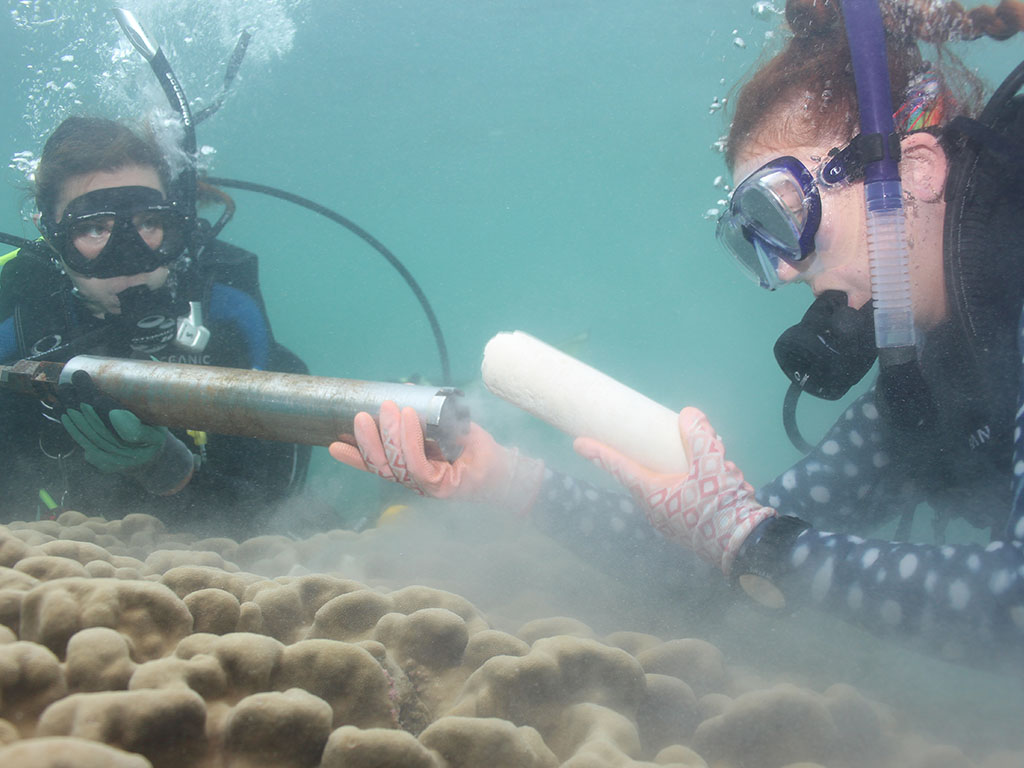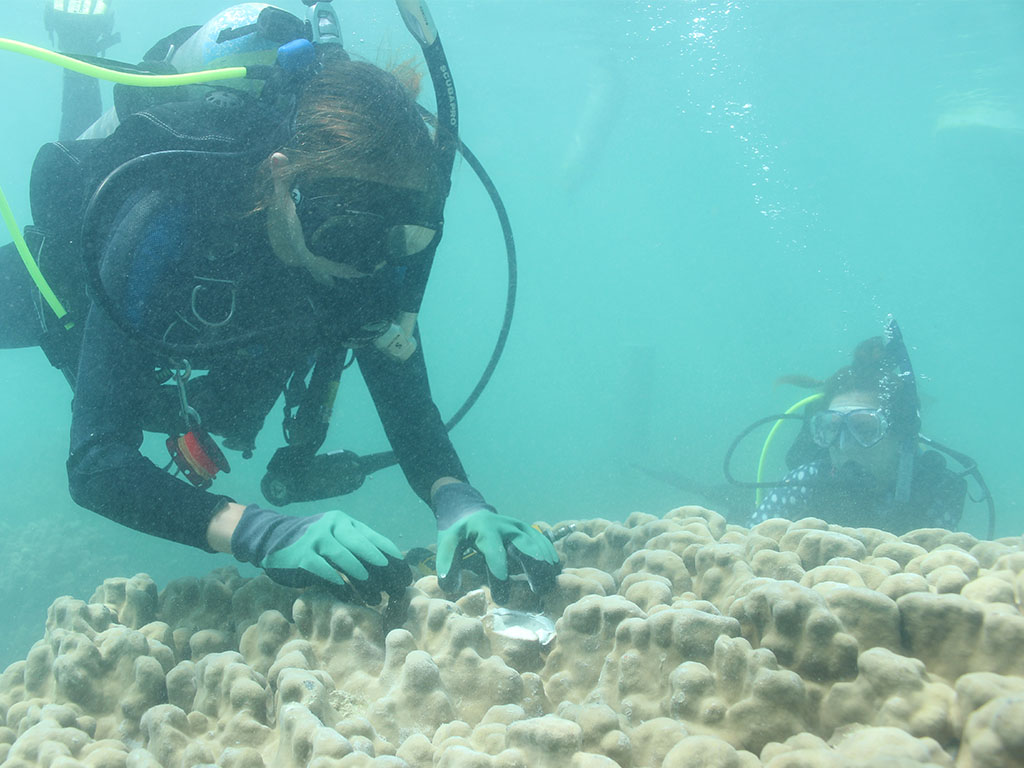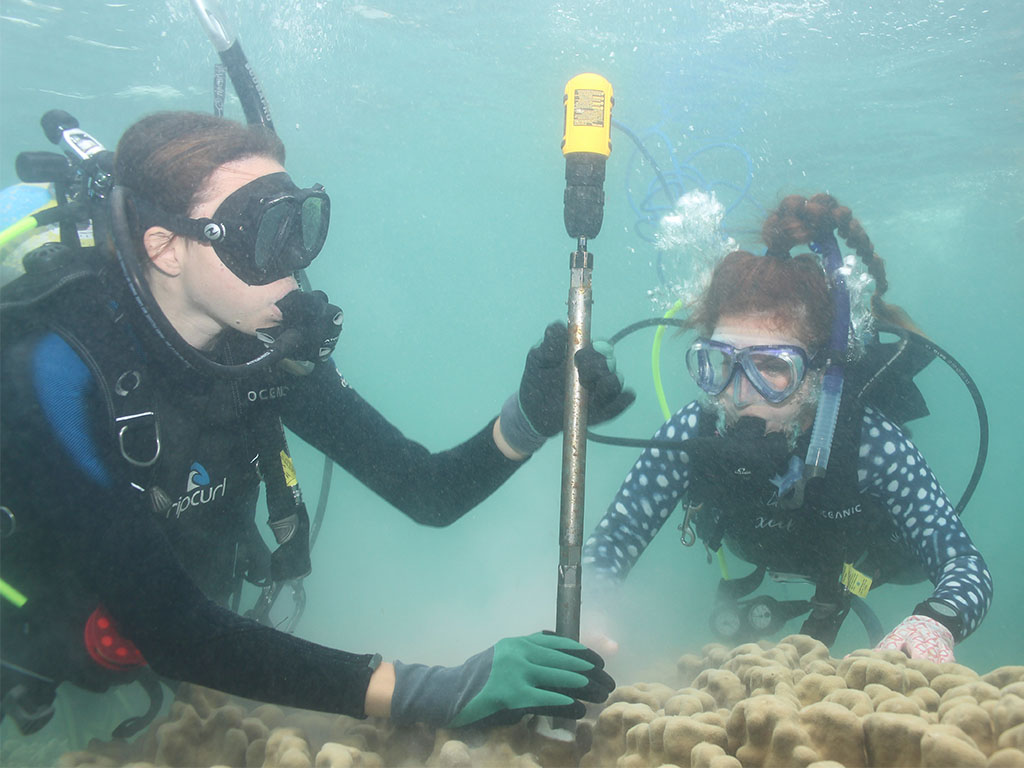
HPU graduate students Hannah Whitaker and Jessica Hankins collect coral cores..
The HPU sclerochronology lab recently expanded their diverse collection of coral cores by adding 10 new specimens from a scientific dive in Waimānalo Bay. Graduate students Hannah Whitaker and Jessica Hankins joined HPU Oceanography Professor Thomas DeCarlo, Ph.D., by diving into the bay and identifying colonies of Porites lobata. With a pneumatic drill (powered by pressurized air) the HPU team of divers drilled into the coral and produced cores that are 5 cm in diameter, about the size of a water bottle.
“This was our inaugural dive for HPU’s new scientific diving program,” said DeCarlo. “It’s just one aspect of the many activities and opportunities an HPU student can participate in when studying at the University.”
The sclerochronology lab at HPU recently received a permit from the Division of Aquatic Resources in Hawai‘i to drill and collect 10 new specimens for research. The Porites lobata coral, known as “Lobe coral,” that the diving team collected this summer is one of three dominant coral species on the island of ‘Oahu.
“Previously collected Hawaiian coral cores have excess bioerosion in the skeletal layers that made it difficult to conduct further analyses,” said Hankins. “Our recent collection of several long coral cores grants us the unique opportunity to further analyze how humans have affected coral skeletal chemistry and growth rates. My research focuses on identifying the chronic changes in coral skeletal chemistry due to chemical and physical variations in seawater. I intend on applying the methodology I’m using in my thesis to our newly collected coral cores.”

Hannah Whitaker carefully observes a large Porites lobata coral..
The term “sclerochronology” is the study of periodic physical and chemical features in the hard tissues of animals that grow by accretion. When a core is removed the HPU team plug the hole with cement and marine epoxy to keep bioeroders out so that the surrounding coral has a new surface to grow. It is estimated that within about a year the coral will grow back, and it will look like the team of divers was never there.
“The physical and chemical properties of a coral’s skeleton can tell us a lot about past ocean conditions,” said Whitaker. “Some coral species maintain environmental records that go back hundreds of years. The Porites lobata massive growth form and long-lived nature make it an excellent candidate for sclerochronology. Our longest core from Waimānalo likely dates back over a hundred years. The lab is excited to see what history is written in these growth bands.”
Back in the sclerochronology lab, DeCarlo, Whitaker, and Hankins rinsed, soaked, sonicated, oven-dried, and carefully wrapped each coral core so they can be stored in the lab for analysis.

Jessica Hankins and Hannah Whitaker drill to collect coral cores for scientific research..
“The location of HPU’s Makapu‘u campus, just across the road from where the cores were collected, offers a unique opportunity to monitor how the corals recover from the drilling process,” said DeCarlo. “Students in the sclerochronology lab will be regularly photographing the corals underwater to track their recovery. This will help us identify optimal ways to continue collecting these exceptionally valuable coral cores with minimal harm to the reef.”
To learn more about marine biology and oceanography at HPU click here.


